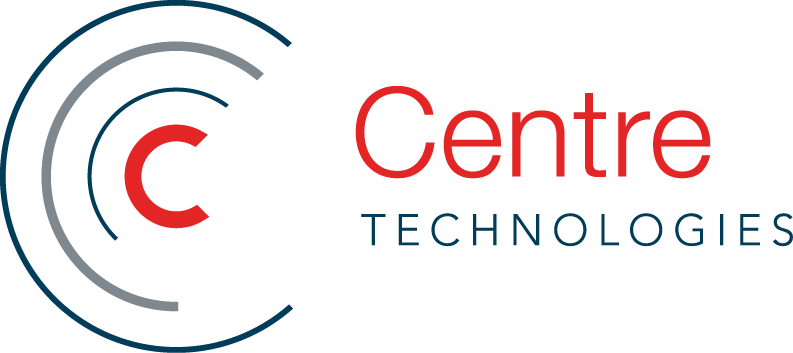Traditional Infrastructure vs. Cloud Services
UPDATED June 6, 2023
Between traditional "on-premise" (onsite) infrastructure and cloud, there's a lot to consider when deciding on the best IT model for a business. Every company is different and therefore requires different things to make sure operational efficiency isn't affected. Still, regardless of who you are, every company needs to ensure scalability, cost-consciousness, reliability, and security for their business. While there has been a major pivot over recent years from traditional IT infrastructure to the cloud, many forget that not all solutions work for everyone. Let's walk through the pros and cons (and our recommendations at the end!).
Cloud services is considered the cutting-edge form of data infrastructure for businesses today and it is rapidly surpassing on-premise (we affectionately refer to it as "on-prem") in popularity. According to the State of the Cloud Report for 2023 by RightScale, 97% of enterprises utilized the cloud (up from 94% in 2019) and 84% of those users deploy multiple clouds. That said, there are still businesses out there that get more bang for their buck through traditional IT infrastructure.
What is Traditional Infrastructure?
Simply put, this type of environment is your onsite data, backups, and information that you access across your business. It is made up of facilities, data centers, servers, networking hardware, desktop computers, and enterprise application solutions. Most businesses usually install their environment on-premise for private use by a company, containing a business's stored data and applications.
With this system, physical data centers are used for storing data and running a complete networking system for daily operations. This model consists of various pieces of hardware that are connected to a network via a remote server on-site. Many businesses with this model need to have an in-house IT department to install and maintain the hardware. Unfortunately, if you don't, this can be a costly third-party expense.
What Are cloud Services?
With cloud services like Microsoft Azure, the infrastructure can be accessed via the internet. Users have the ability to access their information and data without installing on-premise hardware through something called virtualization. Virtualization distributes the capabilities of a physical machine among many environments by connecting physical servers in the cloud. This system is almost always maintained by a managed service provider (MSP).
Cloud infrastructure is a virtual data solution that enables businesses to access applications and information online, regardless of where they are in the world. Because cloud infrastructure is public, it is often referred to as the "public cloud."
advantages of On-Premise Systems
Traditional infrastructure is considered the most secure data hosting solution because most of the advantages to this model place full responsibility on the company to manage it. Traditional on-premise systems heavily rely on an in-house IT team to provide maintenance and support. With this model, businesses can take advantage of outsourcing their staff in order to gain additional expertise, increase focus, and obtain support in deploying and managing their business technology. There are some other bonuses as well:
Full Control of Your Environment
With traditional infrastructure, IT departments have full control of their information. Any problems, changes, updates, and basic maintenance would be the sole responsibility of the IT staff. With the function and execution of services being completely determined by the staff on-site, a business with this model could exercise a lot of flexibility.
You are the Sole Responsibility for Your Security
Because only members of the company's staff have access to the data center in this model, most companies find solace in the security of their company data. This option appears more attractive to companies that have to ensure they meet compliance standards. You and only you can protect your information (and avoid this like the FAA debacle earlier this year).
Around-the-Clock Data Access
Because data is stored on-premise, if network issues were to happen and the internet was interrupted - with a traditional infrastructure in place - the company could still access the data. There's a need to worry about downtime due to service outages or anything of the sort.
Ability to Customize Applications and Services
With complete control of the IT environment, businesses with this model would be able to fully customize their usage of applications and services. This would be another major perk for businesses that have strict compliance standards to meet with their environment.
The main reason I see organizations hesitant to move to the cloud is concern with a variable cost model. People hear horror stories of million dollar invoices and having to pay extra to move your data out. These situations make the news for a reason, they are rare. The last time I ran numbers with a customer this cost for them would have been less than $100.
Ariel Davenport, Solutions Architect
Centre Technologies
Advantages of cloud computing
Cloud services is deemed the new frontier of business computing because of its ease of scalability among other inherently flexible features wrapped up in its attractive cost-conscious package. If not switching to the cloud completely, businesses will opt for a hybrid cloud solution.
In a hybrid cloud solution, the storage and services are made up of on-premise infrastructure, private cloud services, and public cloud services such as Microsoft Azure. With the benefits of utilizing cloud computing, whether altogether or by way of a hybrid solution, businesses can leverage a more flexible solution. Let's check out why so many people choose the cloud:
Most Cost-Effective Option
Cloud solutions are notorious for being the most cost-effective option of the two. Outside of not having to hire a large in-house IT team, utilizing the cloud allows for lower power expenses, lower employee costs, and unlimited storage space.
Unlimited Scalability
With on-premise infrastructure, businesses will usually have to ensure they have the physical space and finances to onboard additional employees. With the cloud, there is an no cap on the ability for storage space and resources.
Avoid Downtime through Greater Resiliency
Because information is mirrored across a variety of servers, linked together, and managed by a load balancer, If one server failed or the connection was lost somehow, no data or service would be lost.
Flexible Working Solutions
Cloud offers the most flexible of work solutions, enabling employees to work anywhere at any time as long as there is an internet connection.
Easy Software Implementation
Another perk of the cloud is that software is offered on-demand as a subscription service. This is also a major time-saver because businesses don't have to worry about uploading the software to each computer utilizing it.
disadvantages of traditional it Infrastructure
While on-prem infrastructure offers a number of benefits for those that are ready to endure full responsibility of on-premise IT hardware, it comes with its downsides.
Limited Server Capacity
Traditional software doesn't guarantee a consistently high level of server performance. Should a server fail, there could be limited capacity and depending on the situation, this would typically degrade performance or cause a complete outage.
Limited Data Access
Should a power outage occur, there is no access to data from anywhere else. Employees won't be working from home temporarily or accessing data from the local coffee shop — company data is as good as gone until the business is able to recover from the power outage.
More Time Consuming
Any growing business will need more storage space at some point. Utilizing on-prem, more storage space looks like having to purchase or rent another server, get additional software licenses, and have these manually uploaded onto your office hardware. With all of the time required to complete such tasks, traditional IT is not the most timely solution.
High Capital Expenditure (CAPEX)
Because on-prem involves the usage of physical servers, in order to enable more storage space, a business would also have to pay for any additional hardware needed. Traditional infrastructure forces you to have to purchase an entire suite of supplies, even if your intention is to only use one tool.
Susceptible to Human Error
Having sole responsibility for company data requires a lot of time and money to ensure the right security is implemented and data recovery systems are in place to safeguard it. Without the right training, systems, and backup plans in place — sensitive company data could be jeopardized and the business in charge could face legal fees.
Not Very Accommodating
On-prem hardware doesn't offer remote working capabilities with the same ease that the cloud does. In order to enable remote working, the company would have to set up a VPN and associated security protocols. Because this often comes with problems regarding IT support, however, it's not a feasible way to enable remote working.
While these disadvantages may cause a few bottlenecks, there are options for solutions that can minimize or even eliminate their impact on running a successful traditional environment. Businesses can overcome these challenges by involving a trusted managed services provider like Centre Technologies to provide solutions that embolden security with around-the-clock software and hardware support, monitoring, and maintenance.
disadvantages of cloud Services
With cloud being all the rave, it's not common to touch on the disadvantages. Depending on the needs of the business, there could be a few downsides to cloud computing that may be important to acknowledge.
Limited Oversight
The first disadvantage is the most obvious - control is limited. Moving services to the cloud requires a business to hand over its data and information. This means that in-house IT staff would not be capable of fixing issues on their own.
Susceptible to Downtime due to Network Issues
The cloud may not be subject to downtime like traditional infrastructure, but it is subject to reboots, network outages, account or service hijackings, denial of service attacks, and technology vulnerabilities (more so on shared environments). If any of these were to occur without being accounted for in the cloud strategy, it could cause downtime.
Lack of Security Insight
It is advised that before a business commits to cloud services from a managed services provider, that a security risk assessment is carried out to assess and safeguard against potential vulnerabilities.
Many businesses refrain from cloud computing, especially if they have compliance standards to meet, because of the lack of direct involvement they would have with their IT environment. Businesses with this IT model can enjoy personalized solutions, planning, and support in cloud services via a managed service provider (MSP).
Through utilizing an MSP with a solid cloud strategy, organizations can have access to Backup-as-a-Service (BaaS), Infrastructure-as-a-Service (IaaS), and Disaster Recovery-as-a-Service (DRaaS) to ensure round-the-clock access to data and on-demand technology.
Determining Your It Budget
When businesses make a decision regarding the model that would be most beneficial to them, considering the budget is critical.
Traditional infrastructure will be more costly than the cloud, but if a business needs the ownership that traditional IT allows — it could be the best decision of the two.
On the other hand, if a business is trying to remain cost-conscious, cloud infrastructure would be the best option. Whether by implementing a hybrid solution or utilizing all of the benefits of the cloud, the flexibility would prove invaluable to a team also looking to save.
Which model is right for your business?
Traditional on-prem and the cloud each offer different advantages and disadvantages, which is why choosing the right model can be a challenge for most businesses. If you're unsure of the right model for you, utilize the IT consultants here at Centre Technologies. We are ready to assist you in your switch or cultivation of a cloud, hybrid, or traditional IT environment.
Our IT consultants will assess your current environment and develop a unique gameplan that not only aligns with your business goals but is crafted to enable business growth. That way, you'll have confidence in the IT model your business utilizes.
Be a thought leader and share:
About the Author
Creative content writer and producer for Centre Technologies. I joined Centre after 5 years in Education where I fostered my great love for making learning easier for everyone. While my background may not be in IT, I am driven to engage with others and build lasting relationships on multiple fronts. My greatest passions are helping and showing others that with commitment and a little spark, you can understand foundational concepts and grasp complex ideas no matter their application (because I get to do it every day!). I am a lifelong learner with a genuine zeal to educate, inspire, and motivate all I engage with. I value transparency and community so lean in with me—it’s a good day to start learning something new! Learn more about Emily Kirk »


 Emily Kirk
Emily Kirk
